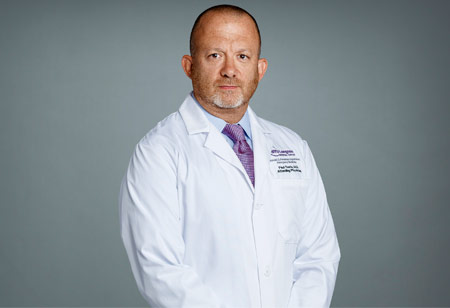Thank you for Subscribing to Healthcare Business Review Weekly Brief

NYU Langone Health: Continuing Excellence in Healthcare at Home
Healthcare Business Review
What are the current technological trends or challenges you have witnessed in the healthcare space?
If we compare the ‘before’ and ‘now’ scenarios, the two and a half years of the pandemic have kindled two major healthcare sector trends. The first is around telehealth: even though patients like to see doctors in person, many patient-physician interactions have moved to the digital space. And patients and doctors are both now adept at using various aspects of telehealth, including video visits. The second trend is the increased demand for care-at-home or care beyond traditional locations. The acceptance of new technologies by patients as well as payers has led many healthcare systems to explore providing a hospital-like environment at patients’ homes through digital means. As care-at-home benefits are becoming apparent among patients and their families, more people are seeking remote treatment options. We can expect both the trends of telehealth and care-at-home to flourish in the coming months.
These two trends also contribute to the popularity of remote patient monitoring (RPM) devices. Think of all the health trackers currently used for monitoring cardiac conditions, lung functions, and other physiological activities. By seamlessly connecting the physical and digital worlds, these RPM solutions not only improve telemedicine encounters - they improve office-based care delivery as well. The whole is greater than the sum of its parts when we bring together telemedicine, office visits, and RPM. Thus, it is no wonder that RPM technologies are now a key component of the patient-centric healthcare delivery model.
What are your opinions on the popularity of telehealth? What will the future of the telehealth-enabled healthcare system look like?
Along with the popularity and convenience of at-home care and telemedicine, the need for in-office care or hospital visits will not be completely replaced. Rather, what we will see is a healthcare system that draws on the advantages of all three care delivery models to better serve specific patient needs. The onus will be on the healthcare clinicians to ascertain the threshold at which they have to move between the various care delivery options. For instance, a simple diagnosis can be made over video conferencing; but a more advanced prognosis may require an in-person visit. Similarly, mildly acute health concerns may be managed with the at-home model, while severe health situations may require a hospital visit. So, we need to be able to properly distinguish at which points in the patient’s journey we may need to change the modality of care delivery.
That being said, this is not unlike prior models where clinical judgment and patient alignment are required to determine the appropriate course of treatment and where the care should be delivered. For example, a video visit for abdominal pain may lead to an appendicitis diagnosis. At that point, the delivery of care may escalate from a video visit to a trip to the emergency department.
Are there any other associated trends that we witness in the era of telehealth?
In the era of telehealth, we as clinicians are committing to building our mastery in leveraging different technologies that are being used to provide the best patient experience. Providing skills in support of delivering good telehealth bedside manner is now all the more important. NYU Grossman School of Medicine and NYU Langone Health have embedded clinical informatics and digital health into their curriculum to teach medical students and residents how to use digital tools to support patient care. This means helping residents engage in video visits with their patients and enabling first-year medical students to use digital tools for telehealth.
What is your advice for the healthcare community?
There’s no doubt that the high-quality care we provide continues to evolve as a result of the technologies we have to work with. One example is virtual healthcare: it is evident that it is here to stay and makes healthcare more accessible to more patients. One of NYU Langone’s Virtual Urgent Care patients was a gentleman who was over 100 years old and who independently navigated his own digital care. Our patients now have technology at their fingertips to monitor and track their vitals remotely and record them within their MyChart patient health record, and even conduct video visits at their home.
In the era of telehealth, we as clinicians are committing to building our mastery in leveraging different technologies that are being used to provide the best patient experience.
Similar to the migration of care from hospital to office, we are seeing the transition of care from doctor’s office to home. Ill patients can now be safely cared for at home with technologies that combine video and monitoring tools paired with machine learning, artificial intelligence, and virtual and augmented reality.
To this end, I would like to see a seamless connection between the hospitals, doctors’ offices, and the patient’s home, to support their health and access to care. The health information collected at home influences hospital admissions in the same way it informs office visits. A patient’s data, such as blood pressure, is of equal value whether taken at the hospital or the ER or shared remotely. For example, we now track a dozen or so physiologic data points of our lung transplant patients and analyze their electronic health records at NYU Langone to ascertain whether to escalate their care or if they are on the right track to recovery. Building frictionless connections between different patient touchpoints will only allow us to augment our care delivery capabilities even further.









